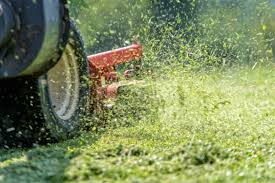Summer Lawns
With the summer solstice upon us, it’s time we discussed lawns.
You’ve done all the work over the fall and spring to have a healthy green lawn only now you have to decide whether you want to keep it that way or let it go dormant for the season. With growing concerns over water conservation not to mention the cost involved, many homeowners are opting to let their lawns go during the hot summer months, while others decide to keep them green for outdoor entertaining and the coolness it provides.
About Summer Lawns.
Grass starts to grow at a rapid rate in spring then summer comes bringing quite a bit of stress. Heat, drought, and heavy usage are just some of the issues facing lawns over the summer.
Once temperatures get into the 80s and above lawns will begin to struggle, with cool-season grasses such as fescue, bluegrass, and rye having the hardest time. Growth will slow, color may fade, and lawns will show signs of wear and tear as they are less able to recover from heat stress and traffic. Some cool-season lawns will even go dormant in the summer, looking brown and brittle until early fall.
Watering lawns wisely.
Water early in the day or after the sun has set to reduce evaporation and fungal growth. Do not water in the middle of the night. When you water, water deeply and less frequently to encourage drought-tolerant roots.
In order to stay green and lush, lawns need at least 1" of water per week and more when the summer is at its peak. Use a rain gauge or a straight-sided can to keep track of the amount of water your lawn receives from rainfall or irrigation.
Don't water at all?
Either water the lawn regularly as stated above or don’t water at all.
Don’t let your lawn go brown and dormant, then try to water it back to life.
If your lawn goes dormant in summer, it should stay that way until fall where it will bounce back naturally.
Mowing.
Raise your mower blades in the summertime. Taller grass is more drought tolerant, grows deeper roots, and helps shade the earth to prevent weed seeds from germinating. Cool season grasses should be mowed at 3”- 4” during the summer, or as high as your blade will go, while warm-season grasses can be mowed at 2”- 3”. Keep your mower blades sharp. Make sure your mower is cutting your grass not tearing it.
Mulching.
Mulch with the grass clippings, these cut blades of grass will add a supply of nutrients to the soil as well as additional shade to further along the growth of a healthy lawn and will help keep moisture levels steady. Mow grass regularly to prevent cuttings from getting too tall which can smother the grass.
Stop fertilization for the season.
It’s best to stop fertilizing lawns about 30 days before your area’s summer temperatures arrive. Applying fertilizer in the heat of summer can burn your lawn and create a flush of tender growth that will struggle in the hot summer heat. You can begin the fertilization cycle again in fall but wait until the rainy season begins.
Weed control.
Summer is the season to get growing weeds removed before they bloom and disperse their seeds for the next year. The safest thing for your lawn and the groundwater is weeding by hand, if you keep on top of this task you won't have much to deal with later on. You can also try spot lawn treating with a post-emergent herbicide designed to kill broadleaf weeds without harming turfgrass. These must be applied when temperatures are below 85° F for a few days and should not be applied when it is raining. Use any product sparingly keeping in mind that during the heat of summer any product can be damaging to already stressed grass.
Insects and Diseases.
Dormant or drought-stressed lawns can be more susceptible to insect infestations. Minor infestations often take care of themselves over the course of the season, but severe problems may require attention, look for an organic non-chemical method to treat the lawn. Summer heat can also produce fungal diseases such as powdery mildew and brown patch, try applying an organic fungicide as needed and avoid watering in the evenings to keep nighttime moisture at a minimum.
Overseeding lawns.
Seeding is best done before the hot summer months in April, May, or early June. If you want to give it a try in the summer, cover the seeds with a small amount of soil, water regularly, and skip mowing the area until the grass is at least 4 1/2”- 5” tall.
Basically keeping up a lawn over summer can be time-consuming or not, but either way, I hope we have helped. Have a wonderful summer!
Kaleidoscope would love to help get your lawn in shape this fall, feel free to contact us to see about joining our lawn program.
A. Moomaw








